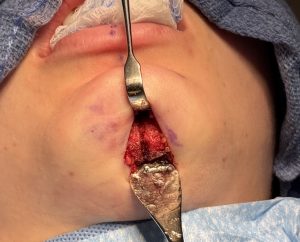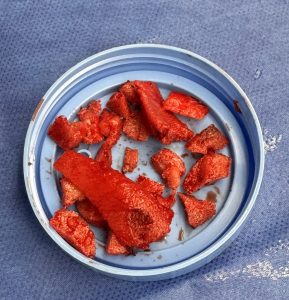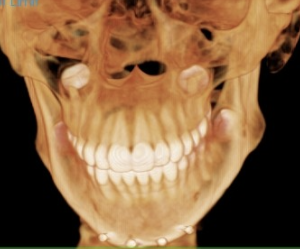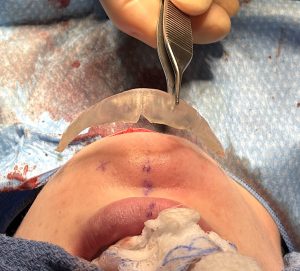Background:
Aesthetic facial implants are currently available in numerous different materials with a wide variety of sizes and shapes. While each manufacturer of the different materials tout their benefits the reality is that there is no perfect implant material that has all of the benefits both surgeons and patients desire. Each material has its advantages and disadvantages and it is important in their selection for any patient that they understand what these are.
Porous polyethylene facial implants have been used for nearly 30 years and its fundamental benefit has always been the property of tissue ingrowth. One can debate whether such tissue in growth is an advantage or disadvantage but their use has been associated with successful results with a normal range of postoperative complications for any facial implant material. When it comes to the most poignant of these postoperative complications, infection, it is neither better or worse than any other facial implant material. What separates this implant material from all others is the challenges that the tissue ingrowth poses when secondary revision or removal is needed. This is the double edge sword of tissue ingrowth into an implant material.
The porous polyethylene material has undergone a number of spinoffs from the original name associated with it, Medpor, from different manufacturers (Omnipore, Su-Por, Synpor). But they all share the same basic properties of being a thermoplastic synthetic material with a pore size from 100 to 200 microns which accounts for the consistent soft tissue ingrowth seen. The other feature that they have in common is that in certain implants, chin implants in particular, the rigidity of the material requires a split design of two separate pieces, which is reassembled once inside the tissue pocket.
Case Study:



A new less projecting 6 mm silicone chin implant was chosen that had a more tapered V-shape. Even with the removed chin implant sectioned into many pieces the new implant clearly had less overall volume. The known measured effect of the chin implant would be 3 mm less horizontal projection and decreasing vertical length to zero.
Too often surgeons get enamored with an implant material and lose sight of the far more important aesthetic outcome. This is a common and good example of a technically well performed surgery that had no medical complications but was an aesthetic failure. How the chin implant size and shape was selected may never been known but it violated an important guideline in female chin augmentation….less is almost always adequate.
Highlights:
- Female chin augmentations can be complicated by postoperative dissatisfaction with the size and shape of the chin largely due to inappropriately selected implant sizes and shapes.
- Porous polyethylene chin implants can be too bulky and wide for many female faces.
- The removal of porous polyethylene chin implants, regardless of how they were initially placed, is best done from an external submental approach to safely and completely remove the material with the lowest risk of nerve injuries.
Dr. Barry Eppley
World-Renowned Plastic Surgeon





